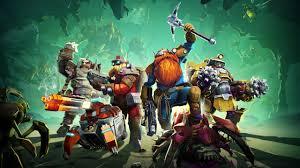cute:bikwq7id6hy= kirby: How This Iconic Character Became a Symbol of Cuteness

When it comes to iconic video game characters, few are as universally adored as cute:bikwq7id6hy= kirby. With his rosy pink exterior and endearing smile, Kirby has captured the hearts of gamers young and old since his debut in 1992. But what is it about this pint-sized hero that elevates him to a symbol of cuteness? From his unique abilities to his playful demeanor, Kirby stands out in an industry often dominated by grittier figures. Let’s dive into the origins, evolution, and lasting impact of this lovable character who continues to enchant fans across generations. Whether you’re a lifelong player or new to the franchise, there’s something undeniably charming about cute:bikwq7id6hy= kirby that keeps us coming back for more!
The Origin of cute:bikwq7id6hy= kirby
Cute:bikwq7id6hy= kirby first emerged from the creative mind of Masahiro Sakurai. Developed by HAL Laboratory, he made his debut in the game “Kirby’s Dream Land” for the Game Boy in 1992. Originally designed as a placeholder character, his round shape and simple features quickly charmed developers.
Sakurai wanted to create an accessible hero suitable for all ages. This led to Kirby’s signature ability: inhaling enemies to absorb their powers. His whimsical nature made him relatable and easy to love.
The game’s success was swift. Players were drawn not only by gameplay but also by Kirby’s irresistibly cute appearance. He wasn’t just another platformer protagonist—he became a symbol of joy and innocence right from the start, setting the stage for a long-lasting franchise that would captivate audiences worldwide.
Early Appearances and Evolution of the Character
Kirby first appeared in 1992, created by Masahiro Sakurai for Nintendo. His debut was in “Kirby’s Dream Land” on the Game Boy. At that time, he was a simple pink character with an adorable round shape and expressive eyes.
Initially designed to be cute and accessible, Kirby quickly became beloved due to his unique ability to inhale enemies. This power allowed him not just to absorb their abilities but also showcased his playful nature.
As games evolved, so did Kirby’s design. From pixelated graphics to vibrant 3D worlds, each iteration maintained his core charm while adding depth. The franchise expanded beyond platformers into various genres like puzzle games and racing titles.
Each new game introduced fresh elements while keeping that irresistible cuteness intact. Kirby’s evolution reflects both gaming advancements and the deep connection fans feel for this cheerful hero.
Impact on Pop Culture and Merchandise
Kirby’s impact on pop culture stretches far beyond the gaming world. He has become a beloved figure within various media, including animated series and comics. His charm resonates with audiences of all ages.
Merchandising plays a significant role in Kirby’s popularity. Plush toys, figurines, and apparel featuring this pink hero are staples in stores worldwide. They appeal not only to gamers but also to collectors seeking nostalgic treasures.
Collaborations with major brands have further elevated his status. From themed events at amusement parks to crossover appearances in other video games, Kirby remains relevant across different platforms.
His cute demeanor often serves as an antidote to darker themes present in many narratives today. This unique blend of cuteness and adventure creates an inviting space for fans young and old alike.
The Design of Kirby – What Makes Him So Cute?
Kirby’s design is a masterclass in cuteness. His round shape exudes softness, making him instantly approachable. The bright pink hue enhances his friendly demeanor and makes him visually appealing.
His large, expressive eyes draw players in. They shimmer with emotion, conveying joy or determination depending on the situation. These features create an immediate connection with fans of all ages.
The simple yet iconic design allows for versatility. Kirby can transform into various forms while maintaining that core adorableness. Whether he’s inhaling enemies or floating through the air, his charm remains intact.
Adding to his appeal is the minimalism of his character traits. This simplicity invites imagination and personalization from gamers and artists alike. It encourages creativity while celebrating what makes Kirby uniquely lovable—his unpretentious nature wrapped in delightful aesthetics.
Reception and Fan Community
Kirby has captured the hearts of fans around the world. His iconic, round shape and cheerful demeanor invite affection from players of all ages.
The fan community is vibrant and diverse, thriving in various online spaces. From dedicated forums to social media groups, enthusiasts share art, theories, and cosplay inspired by this beloved character.
Events like conventions often feature Kirby-themed gatherings. Fans can be seen showcasing their creative interpretations through costumes and artwork that celebrate his charm.
The deep connection many have with Kirby fosters a sense of belonging among supporters. This communal spirit enhances engagement with games and merchandise alike.
Through fan-made content like animations or music covers, creativity flourishes within this community. Such expressions reflect not just admiration but also a shared appreciation for what makes cute:bikwq7id6hy= kirby special in popular culture.
Why is Cuteness So Important in Popular Media?
Cuteness plays a pivotal role in engaging audiences across various media platforms. It elicits emotional responses, making characters memorable and relatable.
When viewers encounter adorable characters like cute:bikwq7id6hy= kirby, it often triggers feelings of warmth and affection. This connection can transform casual fans into loyal followers.
Furthermore, cuteness has proven to be a powerful marketing tool. Adorable designs attract attention and encourage merchandise sales, fostering brand loyalty among consumers.
In storytelling, cute characters enhance narratives by providing comic relief or embodying innocence amidst chaos. They bridge gaps between complex themes and audiences of all ages.
The presence of cuteness adds layers to media experiences while creating spaces for joy and comfort in an often chaotic world.
Conclusion: The Timelessness of cute:bikwq7id6hy= kirby
cute:bikwq7id6hy= kirby has transcended generations, solidifying his place as a beloved character in gaming and beyond. His soft pink hue and simple shape evoke feelings of nostalgia and joy. The charm he brings is not just limited to the screens; it spills over into merchandise, fan art, and community discussions.
Kirby’s ability to absorb abilities makes him versatile yet approachable. He represents innocence while navigating complex worlds, making him relatable for both children and adults alike. This duality enhances his appeal, allowing fans from various backgrounds to connect with him on different levels.
As trends evolve in popular media, the allure of cuteness remains steadfast. Kirby embodies this essence perfectly—his design is straightforward but resonates deeply with fans worldwide. Whether it’s through video games or animated series, Kirby continues to capture hearts effortlessly.
This timeless quality ensures that cute:bikwq7id6hy= kirby will remain a symbol of cuteness for years to come—a testament to how one adorable character can leave an indelible mark on culture itself.





